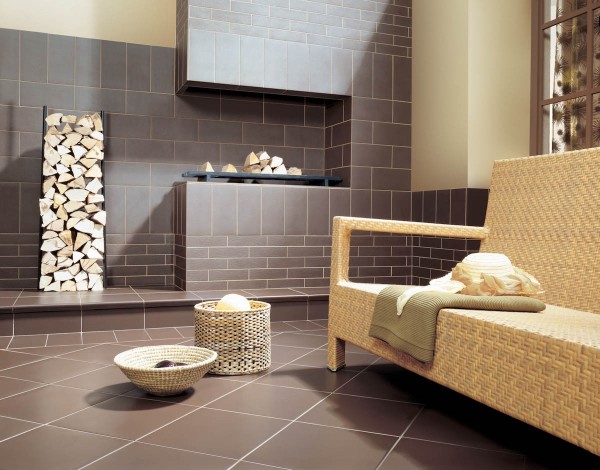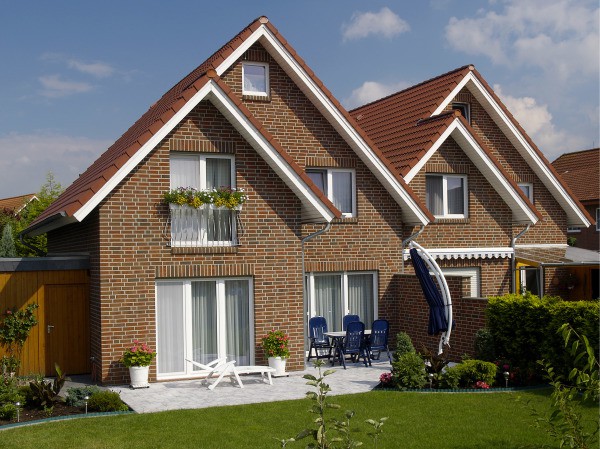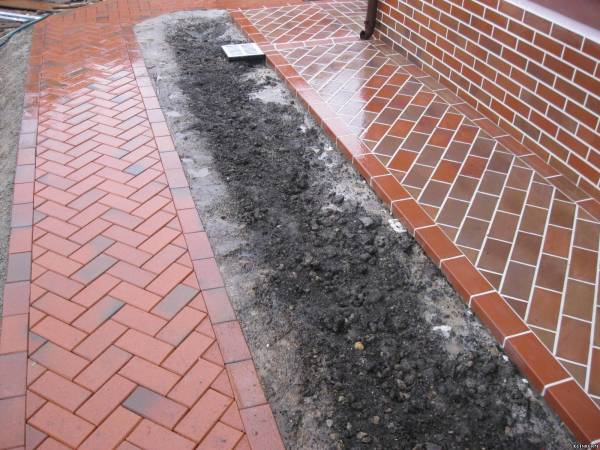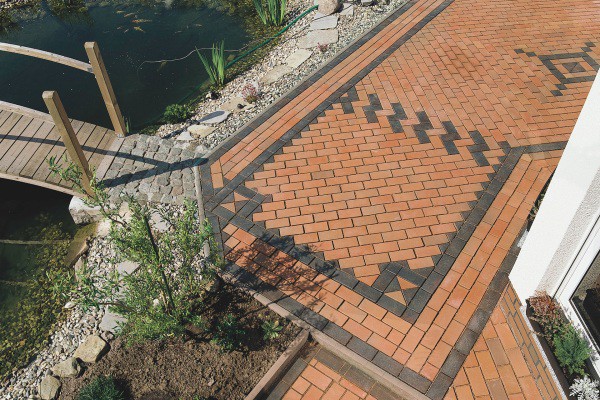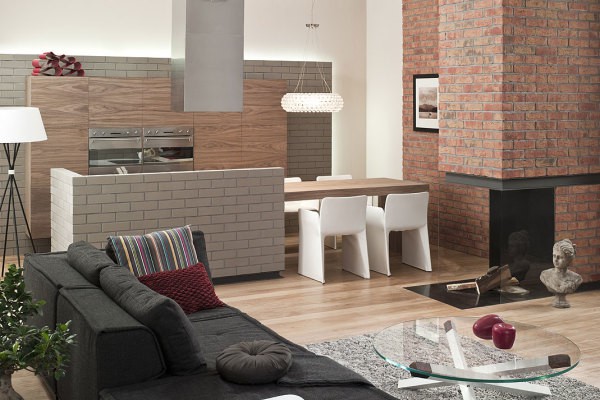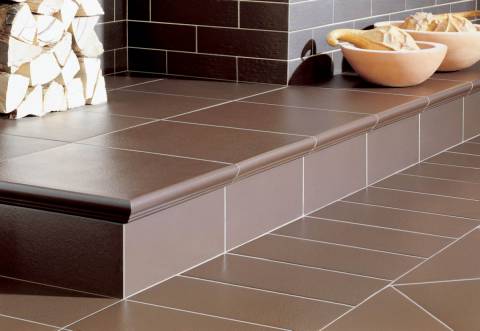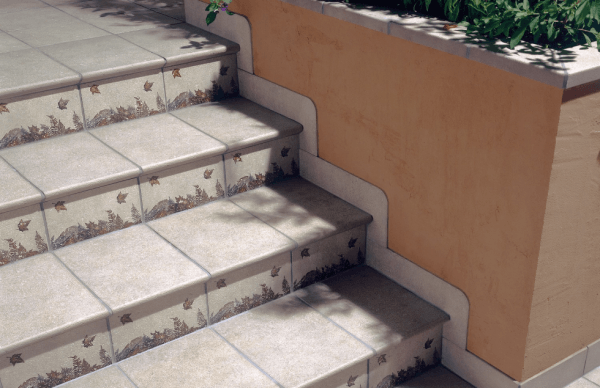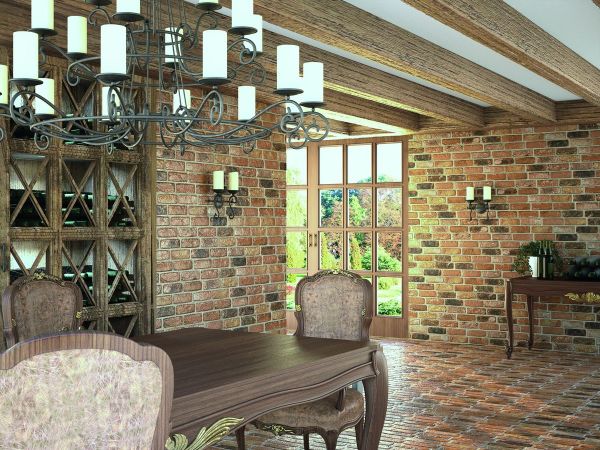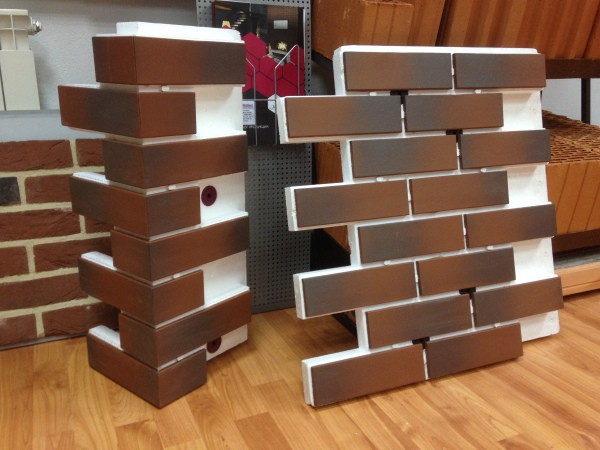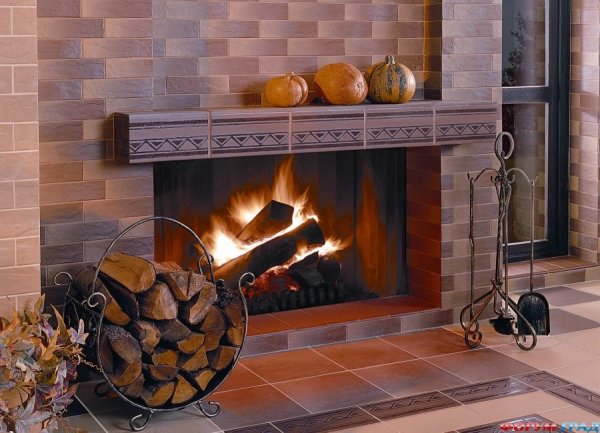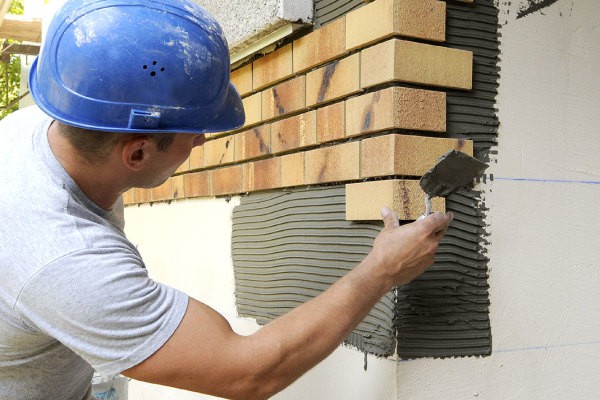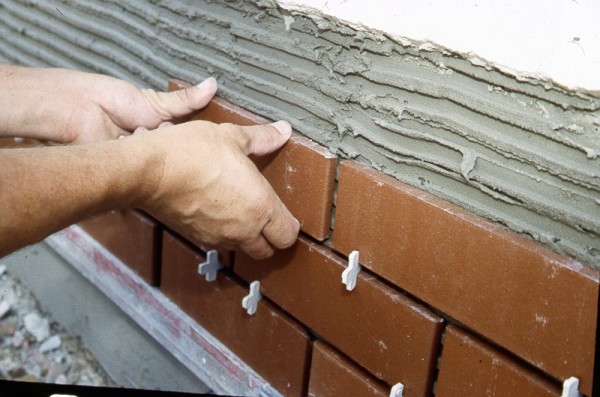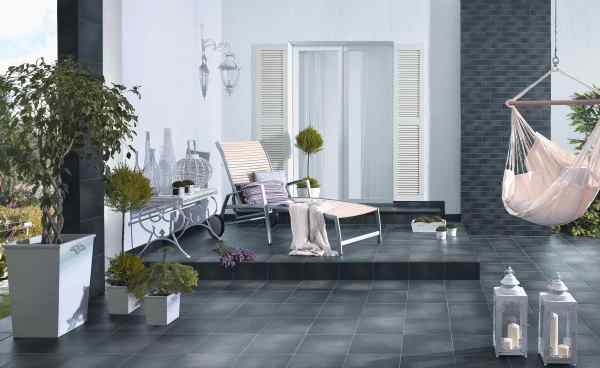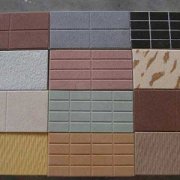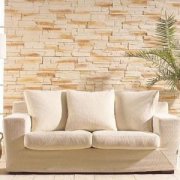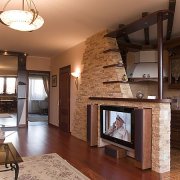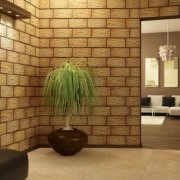Clinker finish: versatile material for interiors and facades
Progress does not stand still, and with the advent of modern technologies, new proposals from manufacturers come to the market of finishing materials. But there are materials that have long become traditional and are not afraid of any competition.
One of them is clinker, which is equally used and for facade decoration, and for interior design - it’s about its varieties that our instructions will tell. For those who intend to make such a finish with their own hands, we suggest watching a video on the topic: “Clinker tiles for interior decoration”.
The content of the article
Clinker products and their application
The term "clinker" is applicable to several types of materials in the production of which refractory clays are used as feedstock. Their natural properties determine the high-temperature sintering technology used in the manufacture of bricks and tiles (see. Production of facing tiles and its features).
Such a high temperature at which firing is carried out (1450 degrees versus 900 degrees) is the main difference between the technology for manufacturing clinker products and conventional ceramic materials. Due to the dense structure, the clinker has higher strength and moisture resistance. He has many other advantages, which we will still mention in the course of the article.
Brick
The first began to make a brick - the Dutch came up with it in the XVIII century. Over time, this technology was recognized throughout the world - people could not but appreciate the strength and durability of houses built from such material, as well as their beautiful appearance.
Buildings built in Europe 150-200 years ago are still in use today - and their facades still have not lost their pristine aesthetics.
So:
- At the beginning of the last century, several clinker brick factories were built in Russia, but in Soviet times it was suspended. The reason was the high cost of raw materials, which were mainly imported. The fact is that on the expanses of the former Union of clay deposits there were practically no necessary varieties.
- Of course, now clinker materials are also manufactured by us, but the price of these products is still high. Despite its solid strength, clinker brick is practically not used for the construction of load-bearing walls, because it is quite expensive. In the construction of houses it is much more profitable to use ordinary brick or concrete blocks, and produce from above facade cladding or thermal panels.
- There is another reason why clinker bricks are not very suitable for walling. The absence of pores in the structure of products also has a negative point: with an increase in density, the material acquires a higher thermal conductivity. And this means that such walls will be worse to keep warm than erected from ordinary building bricks.
- But clinker has practically no competition for paving terraces, blind areas, sidewalks or garden paths. Appearance is not of paramount importance here - this type of brick also has high abrasion resistance and can (even when laying on an edge) be used even for the construction of roads.
- This, of course, is an expensive pleasure for the budget of any settlement.Therefore, preference is given to asphalt pavements, which, as we know, can not withstand the loads, and they have to be repaired every year. Clinker paving slabs are made for paving pedestrian areas.
- As for the brick, it is most in demand in private construction. This material is perfect for facing the basement and the blind area, building the porch (see Tiling the porch: types of material and installation), stairs and terraces, landscape design.
- With small volumes of work, the high cost is not so noticeable, and you need to understand that real savings can be obtained not by purchasing materials for the construction of the building, but in the process of its operation. The less maintenance and repair is required, the greater the savings - that’s all the math.
- Clinker brick is practically not used for interior decoration. The fact is that such a facing has a significant weight and requires rigid support on the foundation or concrete screed. Therefore, it should be provided for in the project and carried out in parallel with the erection of walls. If such decoration is carried out, then not throughout the interior, but in fragments - in accordance with the concept of the design of the room.
Most often, interior partitions are erected from clinker bricks - this masonry looks great and does not require plastering. You can also brick a stove or fireplace, as well as the wall adjacent to them, which we see in the photo above. But note that for such a cladding, it is still more convenient and cheaper to use tiles (see Tiling stoves and everything about it).
Tiles for stairs and walls
Based on the properties of materials obtained thanks to high-temperature firing technology, it becomes clear that they are most in demand where greater strength is required.
Facade cladding does not bear any mechanical stresses, not counting wind, - which can not be said about the stairs. Clinker is the number one material for finishing their work surfaces.
- Thermal conductivity does not play a role here, but water resistance and abrasion resistance are exactly what you need. Naturally, the thickness of the tile intended for facing steps and flooring has a large thickness. In addition, to make it comfortable to move on such a coating, it must be anti-slip.
- Given that even a ton of load for clinker tiles is not the limit that it can withstand, it is used not only for facing the porch or terrace of a private house, but also for arranging entrance groups in public buildings with high traffic.
- As for the steps themselves: they are available in different versions - a simple rectangular shape; with relief cuts along the edges; with a curved end (kapinos) that protects the working face of the structure from destruction. By the way, they are produced not only in the form of tiles, steps can be solid. Such options in size correspond to the width of a standard flight of stairs, but can also be made to order.
- For facing the risers, that is, the vertical surface of the steps, manufacturers offer all kinds of decors that allow not only to create a durable coating, but also to decorate the stairs in an original way. This applies not only to the street, but also to the inside of the house. There are also additional elements that allow you to beautifully draw a straight or rounded corner of the step.
- If flooring slabs most often have a square shape, then in wall cladding: both external and internal, the most popular is tile, which imitates various types of decorative bricks in configuration and front decoration.
- Clinker tiles do not have a division into facade and interior options.Its properties make this material versatile and can be used for finishing any surfaces, at any humidity level. The only thing a manufacturer can offer for interior decoration is tile with a more interesting facial design: engobed, glazed, etc.
- Anyway, tiles are often used for interior work. For the decoration of facades it is much easier, more convenient and cheaper to use thermal panels. Their front layer is the same clinker tile, but in this case it is an integral part of a three-layer composite block. In them, between the rigid base and the decorative layer, there is a layer of polyurethane foam or expanded polystyrene.
- This makes it possible not only to wall the wall, but also to insulate it. The use of thermal panels allows you to quickly veneer even a multi-storey building - and, this can be done both by the system of ventilated facades and by the adhesive method. We think that in regions with a cold climate, where double wall insulation does not hurt, few people would think of finishing the facade with tiles.
An entirely different thing is the interior decoration. With the right choice of design concept, brick tiles, stylized as brickwork, can decorate the interior like no other material.
And the fact that the decoration will retain its original appearance for many years and even decades later will allow the owner of the house not to regret the money spent on it.
Facing Tips
Naturally, the installation process of clinker materials depends on which surfaces need to be lined. But a common requirement for all technologies is the careful preparation of the foundation. Of great importance is the quality of the adhesive composition - it is desirable that it be manufactured in the factory.
So:
- Before proceeding with wall tiles, they must be aligned (see Aligning the walls with putty in accordance with all the rules) Those who believe that this can be done in the process of laying tiles by changing the thickness of the adhesive layer are very mistaken. This only complicates the work, especially if small-format tiles are used.
- If, in preparation for the cladding, the wall has not been leveled, it is unlikely that you will be able to obtain a quality that would meet the requirements of current standards. The thickness of the adhesive layer should be constant, only slight deviations are allowed. It depends on the format and thickness of the tile itself, as well as the type of glue used for its installation.
- If it is a masonry mortar, the minimum layer thickness is 7 mm. Maximum it can be 15 mm, but only for horizontal surfaces: floors, terraces, stairs, pools, etc. If the tiles are laid on mastic, then there are practically no options: 2 mm is the maximum.
- There are standards for the deviations of the already lined wall vertically. These figures depend on the type of tile front decoration: if it is smooth, then a deviation of 4 mm is allowed, if it is embossed, then it is 8 mm on the floor - that is: 1.5-2.5 mm per 1m of the wall height. To comply with these standards, it is necessary to make at least five control measurements for every 50 m2 of cladding area.
- The stability of the thickness of the tile joints is provided by special wedges, but there are masters who, thanks to their skill and well-developed eye meter, can do without them. Installation of tiles is usually done, starting from the corner zones, with the transition from the lower horizontal to the next row.
- The correct position of the first row of tiles is ensured by a rail or a metal profile mounted along the starting line in the lower perimeter of the wall.When using complex layout options for cladding elements, prior to installation, appropriate marking should be made.
To ensure the strength of the cladding and to obtain a good decorative effect, immediately after the tile sticker, the mortar is sampled from the joints. Their filling is carried out after the adhesive layer has hardened. After this, it remains only to clean the surface of the grout that has fallen on it - and the work can be considered finished.
